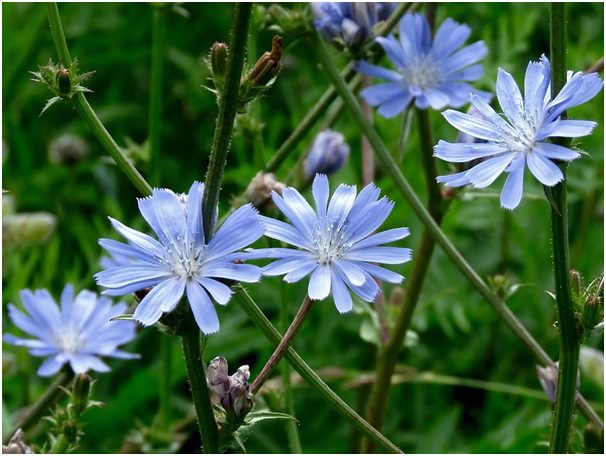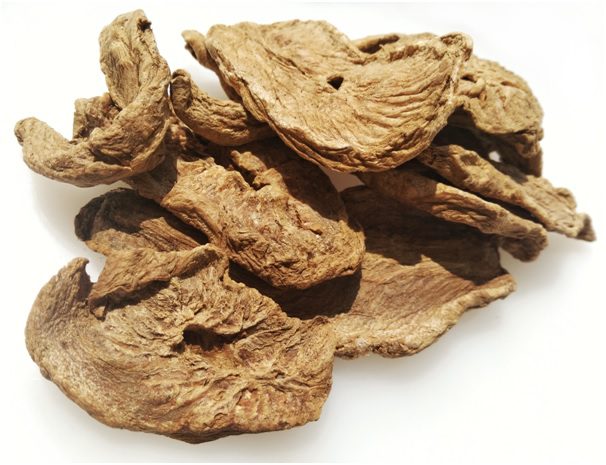Chicory 101
Chicory 101
India has one of the highest consumption of chicory mixed coffee in the world
Surprisingly though (or may be not!), most of us have no clue what it is all about! Is it good, is it bad, is it neutral? We, at Mangalambika Coffee, believe an educated customer is the best customer.
What is
Chicory

Like ginger and turmeric, it is the root of a cultivated plant species, Chicorium Intybus. For ease of understanding, let us call it the chicory plant. A native of France, this plant belongs to the dandelion family. It has a tough, hairy stem and light purple flowers and leaves.
Dried, minced, roasted and ground chicory looks very similar to coffee. Except for the aroma, of course! It is gentle bitter-sweet woody aroma blends perfectly well with that of coffee’s.

Chicory cultivation in India began only from 1950. Prior to this, users imported it from Europe.
In India, Uttar Pradesh and Gujarat account for 97% of its cultivation.
WHAT IS IN IT?
Chicory is a very good source of dietary fiber, Vitamin A, Vitamin C, Vitamin E (Alpha Tocopherol), Vitamin K, Riboflavin, Vitamin B6, Folate, Pantothenic Acid, Calcium, Iron, Magnesium, Phosphorus, Potassium, Copper and Manganese. It is also a good source of Thiamin, Niacin and Zinc.
60 grams chicory (approximately one raw root) contains
Manganese
7% of daily requirement
Vitamin B6
7% of daily requirement
Potassium
5% of daily requirement
Vitamin C
5% of daily requirement
Phosphorus
4% of daily requirement
Folate
3% of daily requirement
Protein
0.8 grams
Carbohydrates
10.5 grams
Fat
0.1 grams
Fibre
0.9 grams
Calories
44
11 Benefits of Chicory
For over 5,000 years, it has been considered as a medicinal plant. The following are some benefits widely attributed to it, some proven, some unproven (not denied).
- Increases bile production
- Step by step guidance
- Lowers cholesterol
- Syrup, being non irritable, works as an excellent laxative for children. Useful in cases of chronic constipation.
- Fresh chicory root decoction is effective against jaundice and liver enlargement.
- Manganese and Vitamin B6, present in it, are considered good for healthy brain.
- Chicory root has inulin, a type of prebiotic fiber. Inulin helps weight loss and improved gut health.
- Half teaspoon of dried root powder, mixed with honey, taken three times daily, is a good expectorant in chronic bronchitis.
- Its greens are one of the richest sources of vitamin A. Highly nourishing food for optic nerves (eyes) and the muscular system.
- Per one Korean study, it reduces cholesterol levels, and increases the ratio of HDL (“good fat”) to LDL (“bad fat”) in lab tests in animals.
- In ancient days, chicory paste was used externally to address swelling and inflammation in eyes.
Please note: We neither endorse nor question any of these claims. This information has been taken from various sources on the internet.
Demerits of Chicory
Not many side effects have been reported in the long, long history of chicory.
- Some people may experience symptoms including flatulence, belching, abdominal pains, intestinal sounds, and bloating.
- Pregnant women need to avoid chicory, till at least one year after delivery.
WebMD is a reliable health management site, with useful information on this topic.
Chicory in Coffee
In the Ancient World, Egyptians cultivated chicory 5000 years back, as a medicinal herb. Ancient Greeks and Romans used the plant as a vegetable. Horace, Ovid, Pliny and Virgil (dying years of B.C.) have referred to it in their works. Galen (130 A.D.), Greek physician for Roman emperors and gladiators, impressed by its stimulating effect on liver, called it ‘Friend of the Liver’.
Antony Wild, in his book 'Coffee: A Dark History', says, chicory, as an additive to coffee, became a norm in France during Napoleon's “Continental Blockade Of 1808”. A serious shortage of coffee, and the consequent price rise, made people add this root powder to coffee.
Even though, subsequently, coffee supplies became abundant, adding chicory to coffee spread to North America, with the advent of the Civil War. Even today, Louisiana carries the tradition, thanks to French influence on its society.

